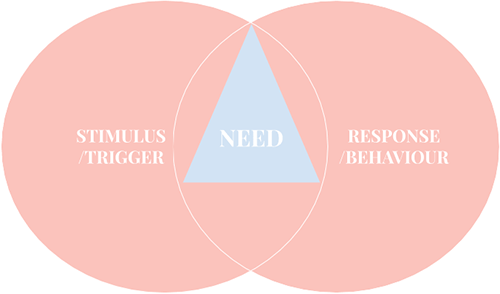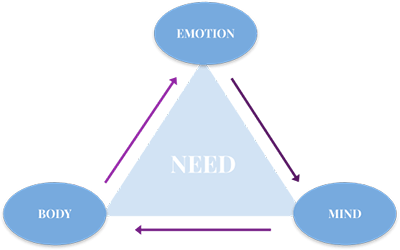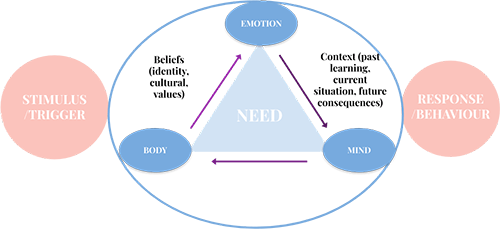5 tips to start transforming your behavior
#eq #emotionalintelligence #transform #behaviors
‘Between stimulus and response, there is space. In that space is our power to choose our response. In our response lies our growth and our freedom.’
The first time I heard this quote, often mistakenly attributed to Viktor Frankl, was in my 360 assessment with the Human Resources advisor. 360 is a tool used to assess your current leadership abilities and help improve leadership skills.
HR advisor explained, that if I want to prevent myself from being too emotional and defensive in work situations, I should create a space between Stimulus and Response.
That sounded great to me, so I asked her ‘How’?
She didn’t know. To be fair, she wasn’t a personal coach, psychologist or emotional intelligence expert. But what was surprising was realization after digging deep in the research, that nobody else knows either.
Don’t get me wrong — there is plenty of scientific research out there and even more non-scientific advice. Many say that by controlling our thoughts we can control our emotions and behaviors. Some are focusing on body-based solutions — like yoga or exercise to help change behaviors. Strengthening willpower, getting rid of limiting beliefs or defining our values often popped up in the research too.
Confusingly, there is a grain of truth in every bit. Our thoughts are indeed powerful, value-based goals strengthen our motivation and yoga practice can have a great impact.
And yet most approaches fail to grasp the simple fact that our minds and bodies are much more complex than one factor could explain. R.Lazarus in his book ‘Stress and Emotions’ expresses his frustration of such unnatural separation of our mental, emotional and sensual experiences.
What transforms our behaviors is looking at the entirety of ourselves, in particular, the integration of body and mind.
So ‘to harness the power to choose our response’, first and foremost, we should look into the need that lies between Stimulus and Response. In the simplest sense, once we are triggered (by Stimuli), we are out of balance and our thoughts, emotions, body is working with everything it’s got to restore the balance. This could be a need for safety, connection, recognition or many others.Tip 1. The best place to start influencing our responses is to get to the core of our needs.
To attend that need, our mind, body and emotions will work together, often communicating in a non-linear, fast and interconnected ways.
There is a lot of disagreement about what comes first, how much of it is conscious and which one is more powerful.
Since our intellect seems to lie in the most sophisticated part of the brain — neocortex, it is often assumed the most powerful. However, if you ever burnt yourself and been overwhelmed by pain, you know that mental capacity to block the pain in the body is quite limited. Nor it is particularly helpful to think that ‘in 5 years this will not matter’ in the moment of being dumped.
Our emotions are often the first to recognize the threats and mobilize us to action even before our thinking kicks in. For example, when we jump out of the way from the speeding car, intellectual involvement is limited because of neocortex, even though highly sophisticated, is slow. And if you think you have power over body think again! We can become anxious just due to simple dehydration or have lack of empathy when we are in high stress.
Tip 2. Instead of arguing who is right, you are better off accepting that mind, body, and emotions provide you with valuable input to help you attend your needs best.

Our mind, body, and emotions form those responses that do not operate in a vacuum. Instead, it pulls together all the resources it can get its hands on. They will take into account the facts of the present, experiences and learnings of the past to consider the most appropriate response. Our beliefs about self and our cultural norms, past traumas and unhealthy behaviors, our character attributes and other aspects will also influence the response.
Tip 3. To master your responses (i.e. behaviors) you will need to find out more about your inner self, in particular, the unhealthy aspects — limiting beliefs, past traumas, pains, and unhealthy emotions.
 In the diagram below, you can see a visual diagram to demonstrate such interplay.
In the diagram below, you can see a visual diagram to demonstrate such interplay.Tip 4. Knowing which aspect has gone weary, gives you the tools to apply relevant strategy and tactics and start the permanent change of your responses.
For example, if you feel jealous around someone, you know the Stimuli is meeting that person. Your strategy could be as simple as reducing communications with that person. While this is a short term strategy, some battles are not worth fighting for. The key thing to remember is that by being aware of all aspects, you start having a choice.
Challenging our beliefs about what makes us happy can be highly impactful too. We feel much more empowered, interested, joyful and determined when we chase goals we care about, not the ones given to us by our family, friends or broader society.
If you tend to personalize and catastrophize, then looking into your thoughts could be useful. Maybe at some point expecting the wors was helpful — for example, helped you get through rejections. Now instead it is holding you back. Untangling some of those thought patterns could help you change your behaviors better.
Tip 5. If you still prefer one approach to master your behaviors over another, choose one that works with more than one aspect that lies between Stimulus and Response.
Emotional intelligence is one such framework, helping us to integrate the emotions and mind. Practicing yoga is another good approach as it aligns body and mind.
Whatever you do, remember that your inner world is highly complex, but you are also perfectly capable to master that complexity. After all, that’s what made us the most sophisticated beings on the planet.
